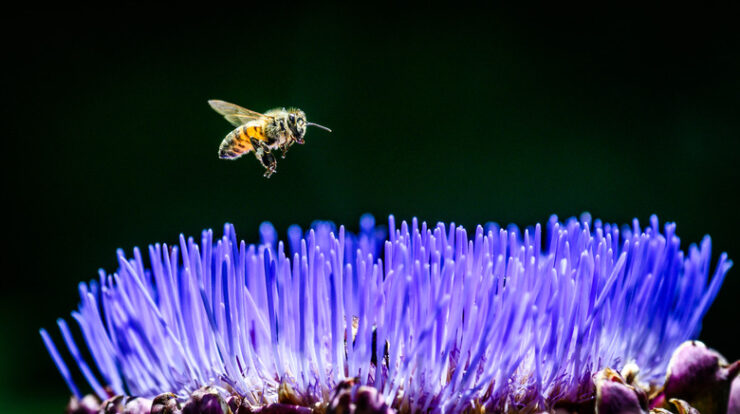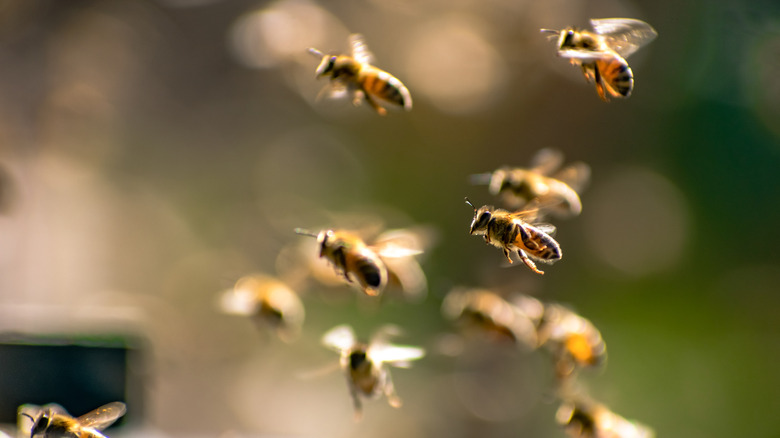
For many years, individuals have echoed an unusual assertion: honeybees (and particularly bumblebees) ought not to be capable of flying. Based on traditional aerodynamics theories, their hefty frames alongside comparatively tiny wings seemed incompatible. Under the rules of physics, bee flight appeared implausible; thus, this notion became entrenched in pop culture as evidence of nature’s ability to transcend rational understanding. Even though this idea is quite uplifting, the scientific basis supporting it has always lacked robustness.
The roots of the honeybee flight myth remain unclear, yet one persistent tale credits an aerospace engineering specialist for determining that bees cannot fly due to their wing size relative to body mass. While certain versions credit researchers such as Ludwig Prandtl or Jakob Ackeret with this assertion, it probably originated from a misinterpretation of findings by the French zoologist Antoine Magnan in 1934. He used conventional aircraft formulas when analyzing insects’ wings and erroneously determined that insect flight was not feasible according to established aerodynamic principles.
The hypothesis did not withstand examination, since the wings of creatures that fly typically function distinctively compared to those in theoretical models.
how airplane wings work
Bees managed to fly smoothly, yet nobody could provide a concrete explanation for this until researchers armed with high-speed cameras and miniature wind tunnels chose to investigate further. Through videos capturing bee flights at thousands of frames each second, scientists succeeded in unraveling the intricacies of their wing actions. This discovery didn’t merely resolve an enduring enigma; it also highlighted our vast remaining knowledge gaps regarding species we’ve extensively examined. It appears that honeybees defy established physical principles rather than adhering strictly to them—instead, they reshape what we believed those principles entailed.
Read more:
13 Newly Found Animal Species in 2024
Uncovering the Truth Behind Bee Flight

In 2005, a group of scientists at the California Institute of Technology ultimately
cracked the mystery
Using high-speed video and specially designed robotic wing models, researchers examined how bees fly. They recorded honeybees in flight at an astounding 6,000 frames per second, allowing them to meticulously observe the motion of their wings. The findings revealed something even more unexpected. As study co-author Douglass Altshuler explained, “Honeybees flap their wings very quickly.”
LiveScience
. “In contrast to the fruit fly that has one eightieth the body size and flaps its wings 200 times each second, the much larger honeybee flaps its wings 230 times every second.”
This finding was unexpected since smaller insects usually make up for their diminutive size by increasing their wingbeat frequency. It came as quite a shock to discover this characteristic in such a relatively big bee. The effectiveness of the bee’s wings can be attributed to its use of unsteady aerodynamics—a concept applicable during rapid and erratic airflows. Bumblebees exploit these turbulent conditions to great benefit.
Particularly, their flapping generates a leading-edge vortex (a small whirlwind atop the wing), which momentarily boosts lift during each change of wing direction. Additionally, their wings spin throughout this process, contributing further to lift—much like how a rotating tennis ball veers off course mid-air. This approach relies more on raw power than finesse: both honeybees and bumblebees expend considerable energy to maintain flight. The high-calorie nectar they ingest serves as an energetic reserve for such costly aerial acrobatics. By clarifying this conundrum regarding bees’ ability to fly despite conventional wisdom, we can better understand how their capabilities compare with those of other flying creatures including hummingbirds. Furthermore, this insight has prompted certain engineers to draw inspiration from these biological principles when designing mechanisms for artificial flight.
From Bee Flight To Human Engineering

The biomechanics of bee flight aren’t just a fascinating biological curiosity — they’ve become a source of inspiration for engineers trying to rethink the future of aerial vehicles. After researchers deciphered how bees manipulate unsteady airflows to stay aloft with such small wings, roboticists began exploring how to mimic these mechanics in human tech. The Harvard-based RoboBee project was one of the most prominent in this area, leading to the creation of microbots no larger than a paperclip that can hover, dart, and perform complex maneuvers in the air by flapping tiny wings hundreds of times a second, just like bees do. And in 2025, the RoboBee received upgraded landing gear based on another insect — the crane fly.
While these micro air vehicles are still limited in flight time and energy efficiency, they hold promise for real-world applications. Considering the fact that bees are dying in record numbers, the question of
What could occur if bees ceased to exist?
Unfortunately, this is an issue that humanity must now face. Innovations such as the RoboBee have the potential to enhance large-scale pollination, support search and rescue missions, and refine environmental monitoring techniques.
Scientists have suggested employing “entomopters”—aircraft designed to mimic insect flight—to explore low-gravity settings in outer space, such as surveying Martian landscapes where traditional rovers could face challenges. Over just twenty years, what was once a puzzle about how bees manage to fly has evolved into a source of inspiration for advancing human aviation technology. As our knowledge of various insects’ flying capabilities keeps expanding—take a look at recent studies on this topic—it becomes clear that these insights may shape the future of aerospace engineering.
What butterfly wings appear as when viewed through a microscope
For an incredibly impressive view—the future of aviation might draw inspiration from insect physiology rather than bird anatomy.
Read the
original article on Dailyexe
.






